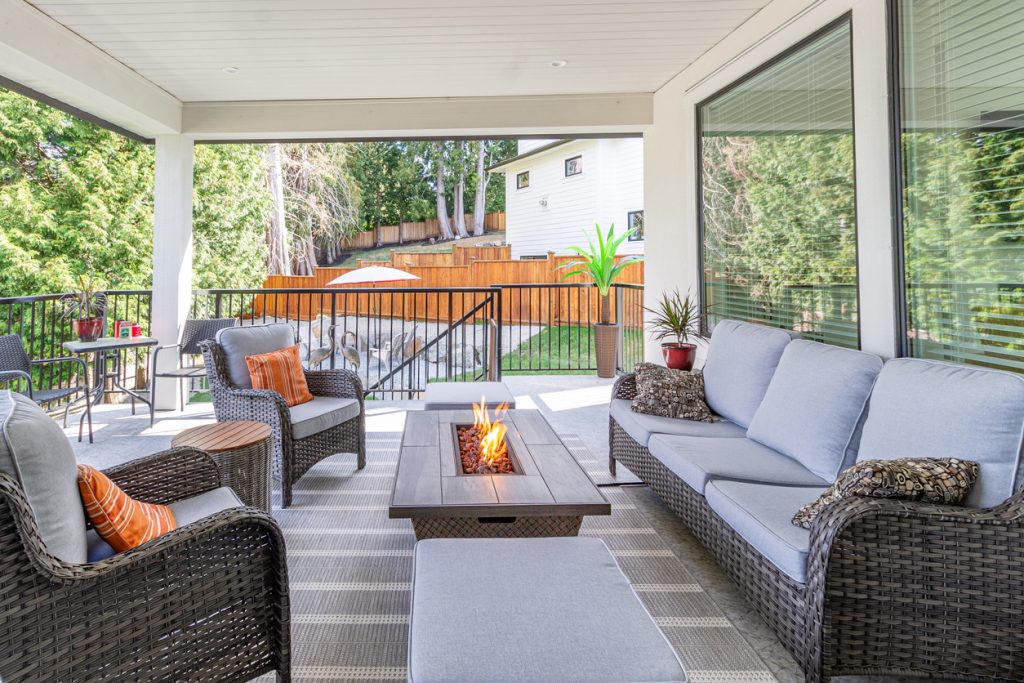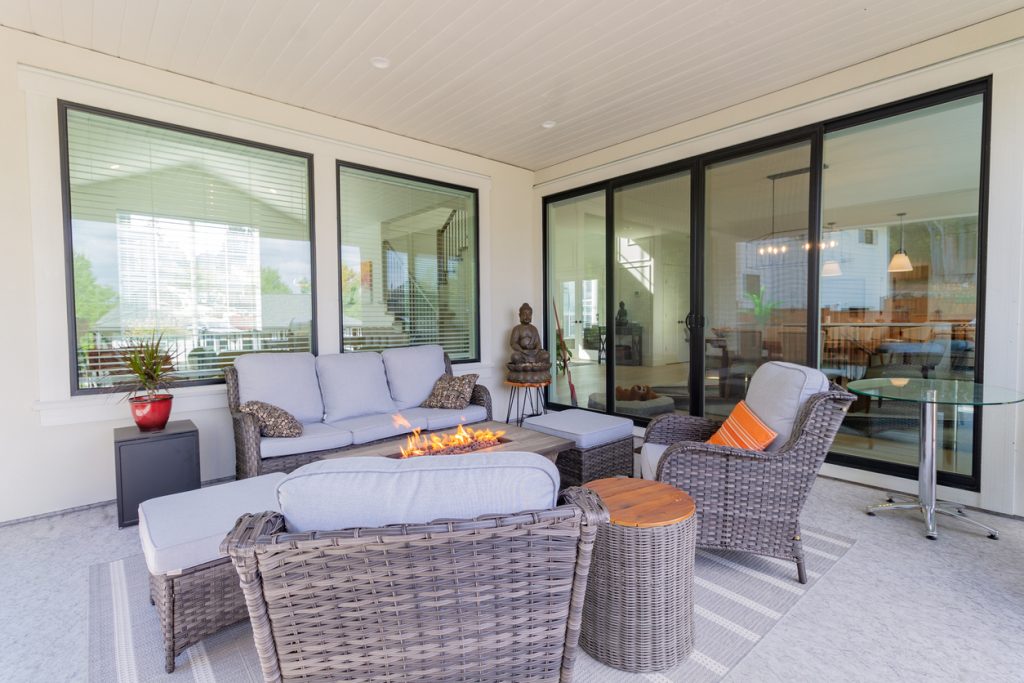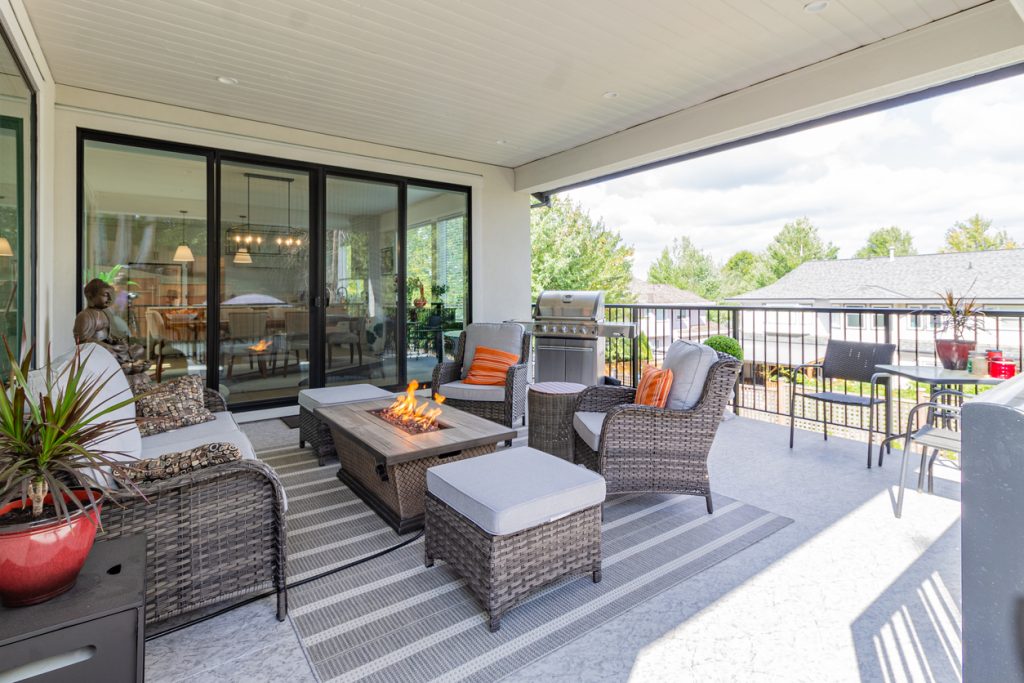Embarking on the construction of an outdoor deck can transform your home, providing a splendid space for relaxation and social gatherings. Before picking up any tools, it’s essential to engage in thorough planning, as you must consider several critical aspects to ensure the success of your project.
Determining the size and location of your deck, setting a realistic budget, and choosing the right materials are foundational steps that will dictate the project’s trajectory. The design phase is where creativity meets practicality.
An outdoor deck extends your living space and reflects your lifestyle and preferences. Therefore, you must consider what you’ll mainly use the deck for, whether for dining, entertaining, or simply lounging.
Coupled with the functionality, the design elements, such as built-in benches, railing choices, and lighting options, can elevate the aesthetics and usability of your deck. Remember to consider the long-term maintenance and durability of the chosen materials, as they will impact the longevity and appearance of your deck over time.
Building a deck requires attention to detail and understanding construction rules and design principles. As you begin this exciting project, consider factors such as compliance with regulatory standards, choosing the optimal location, and customizing the design to suit your needs.
Before drafting your dream deck, familiarize yourself with the local building codes. These regulations will affect everything from the deck’s structure to safety features. You’ll need to obtain permits to ensure your deck is legally compliant. Check if local codes require certain materials or construction methods and consider the implications for your timeline and budget.
The location of your deck affects both aesthetics and functionality. Evaluate your property to determine the optimal placement. Consider sunlight exposure, privacy, and proximity to your house. Be mindful of underground utilities or existing structures that could interfere with the construction.
Deck size and elevation are crucial for utility and building code conformity. Start by deciding what you want from your deck: Is it for dining, lounging, or entertaining? Assess the available space and consider how the deck will integrate with your landscape. If your terrain is uneven, you may require a raised or multi-level deck to provide a flat surface.
Your deck layout reflects your style and the envisioned purpose of the deck. Consider various design tools to help plan a layout that harmonizes with your home’s architecture. Decide if you want to undertake the project as a DIY challenge or hire a contractor. A well-thought-out design can save time and money during the construction phase.

When venturing into building a deck, your choices of materials and tools are vital for the project’s success. Quality materials ensure longevity, while the right tools make the installation more efficient.
You have many options for decking materials, each with its advantages. Traditionalists might choose redwood or cedar for their natural beauty and resistance to decay. Alternatively, composite or PVC decking are low-maintenance choices that resist fading and staining for extreme durability. If you’re seeking a premium look and feel, ipe, a strong and dense hardwood, could be your go-to choice.
The stability of your deck relies on its framing and footings. Use sturdy materials like pressure-treated lumber for the framing to support the weight and resist rot. For footings anchoring the deck to the ground and preventing shifting, options include poured concrete piers and precast concrete blocks. Your local building codes and the deck’s size and height determine the depth and width of your footings.
For safety and aesthetics, rails and stairs are essential. Ensure your railing choices comply with local codes while matching your deck’s design. Materials for railings include wood, composite, metal, or glass. As for stairs, materials should provide durability and slip resistance, with cedar or composite materials being popular choices.
Your toolkit should include a circular saw, drill, hammer, level, tape measure, and speed square for precise measurements and cuts. You’ll also need fasteners, such as screws and nails, which are specific to outdoor use to prevent rusting. Hidden fasteners create a smooth look for your deck but require specific installation tools. Don’t forget safety equipment like goggles and gloves.
Remember, when selecting deck materials and gathering tools, quality is critical. High-grade materials may have a higher upfront cost but lead to a deck that looks better and lasts longer, with less maintenance over the years. Choose your tools wisely, ensuring they are suitable for the job and safe to use.

When designing your deck, it’s essential to blend functionality with style. Thoughtful choices in shade, lighting, furniture, and additional features can transform your outdoor space into a comfortable and versatile extension of your home.
Shade is crucial for your deck to enjoy your outdoor space comfortably, even on the hottest days. Options for shade include traditional table umbrellas, retractable awnings, or more permanent solutions like a wooden gazebo. For lighting, consider deck lighting to extend the usability of your deck into the evening. Ambient lighting, such as string lights and solar post caps, offer a warm glow, while task lighting, like spotlights, can illuminate a grill or cooking area.
Selecting outdoor furniture that fits your space and style is vital. It should be durable, comfortable, and aligned with your entertaining needs. If you enjoy hosting, incorporate a grill or an outdoor kitchen. For relaxation, consider a hot tub or a set of lounges. Additionally, benches can provide both seating and discreet storage options.
Introduce greenery and structure with planters and pergolas. Planters allow for container gardening, adding color and life to your deck. They can be moved easily to accommodate your needs or to change the aesthetics of your space. Pergolas offer a visually striking element and can provide a framework for climbing plants or a canopy for added shade. These features also define spaces within your deck, making it more inviting for entertaining or simply enjoying your outdoor setting.

When planning your deck, consider enhancing its utility and aesthetics with smart storage solutions, seamless integration into your yard, and well-chosen accessories.
Your deck should cater to both leisure and functionality. Optimize storage by building benches with hidden compartments or adding under-deck water drainage systems to keep the space dry for storing outdoor gear. Think vertical: deck support columns and beams can be designed with shelving or hooks to hang gardening tools or decor.
A deck should complement your yard, not clash with it. Use deck support beams and fencing to create a natural flow from the house to the garden. Employ arbors or trellises adorned with vines for privacy and a soft transition into green spaces. Pay attention to sun and wind patterns to position your deck for optimal comfort.
Select accessories that enhance your deck’s safety and style. Choose deck railing types that conform to railing codes while matching your home’s aesthetic. Consider glass railing features for unobstructed views, or install deck railing parts that double as lighting fixtures. Add skirting to conceal the under-deck and finish the look with weather-resistant fabrics and durable accent pieces.

Constructing a deck requires careful planning and ongoing maintenance to ensure longevity and safety. Whether you take the DIY route or hire a professional builder, understanding the essential steps and maintenance procedures is crucial for a successful and enduring deck.
Obtain the necessary building permits when embarking on a DIY deck construction, as regulations vary by location. Consult how-to guides and tutorials to understand the process thoroughly. Your construction steps should include:
Follow the guides step by step, and if in doubt, consider contacting builders for advice or consultation.
Choosing to hire a contractor implies a different set of responsibilities.
Professional builders will handle most heavy lifting and ensure the construction complies with local regulations.
After building your deck, it is essential to commit to regular maintenance to protect your investment.
Remember, immediate attention to repairs can significantly extend the life of your deck.
When considering building a deck, it’s essential to have clear information about materials, design, construction, tools, and codes to ensure your project’s success.
Choosing materials for your deck involves durability, maintenance, aesthetics, and cost. Wood options like cedar and redwood offer natural beauty, while composite materials provide longevity with less maintenance.
Consider the architectural style and color scheme to select a deck design that complements your home. Align your deck’s design with your home’s features for a cohesive look. Explore design inspiration and tools to help visualize your ideas.
Properly designing and laying out a deck includes measuring your space, determining the deck shape, choosing a location, and planning for features like stairs or railings.
Constructing a sturdy deck frame requires quality materials and attention to detail. Ensure proper footing placement, secure ledger attachment to your home, and use appropriate joist and beam installation hardware and techniques.
Practical tools for creating deck plans include professional CAD software, user-friendly online planners, and 3D modeling tools. Many manufacturers offer design tools tailored for decking projects to help visualize and plan.
Building codes and regulations vary by location, so checking with your local building authority is vital. These codes cover railing height, structural support, and material specifications, ensuring safety and compliance in deck construction.
Explore More Design and Remodeling Ideas